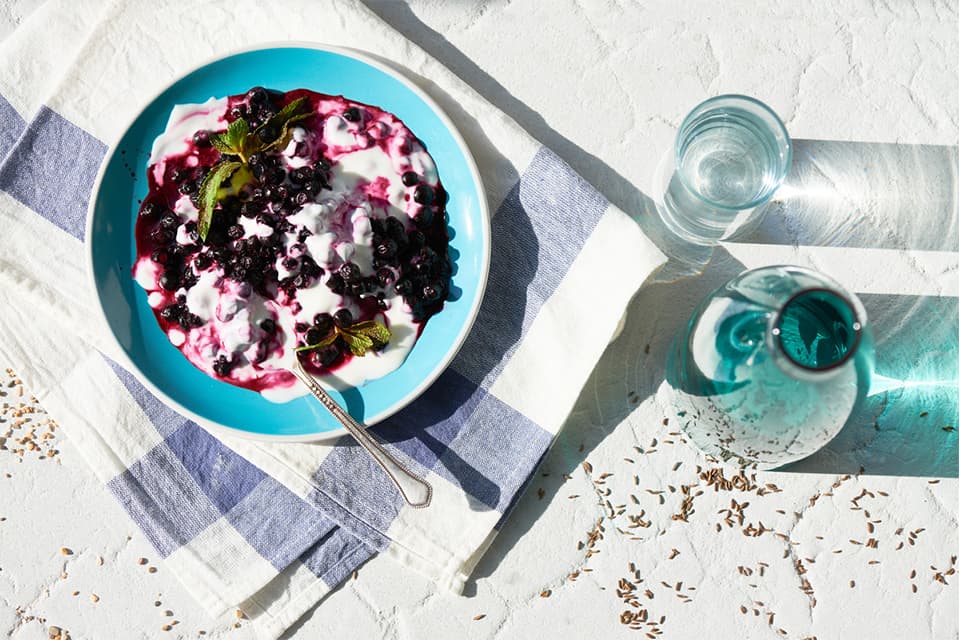You may have heard that probiotics are the new “it” ingredient you should include in your diet posthaste. You may also have no actual clue what probiotics are or how to get them. You’re not alone.
“Probiotics are healthy bacteria in fermented food and drinks that can help feed the healthy bacteria in your gut,” Marisa Moore, R.D.N. and consultant in Atlanta, Georgia, tells SELF.
Probiotics may do more than promote the growth of “good” bacteria in your system. “These bacteria can fight pathogenic organisms,” Shilpa Ravella, M.D., a gastroenterologist with expertise in nutrition and an assistant professor of medicine at Columbia University Medical Center, tells SELF.
In addition, there may be other probiotic-related benefits that science has yet to fully back up. “Although more research is needed, there’s encouraging evidence that probiotics may help treat diarrhea, especially following treatment with certain antibiotics, prevent and treat vaginal yeast infections and urinary tract infections, treat irritable bowel syndrome, speed treatment of certain intestinal infections, and prevent or reduce the severity of colds and flu,” says Mayo Clinic.
So, there are clearly a few reasons you may want to incorporate probiotics into your diet. But how exactly do you do that? “There are several different strains of probiotics that you can get from different types of foods,” says Moore. Lactobacillus acidophilus is the most common probiotic strain, but you don’t have to spend hours researching which fermented foods have L. acidophilus and which don’t. Other strains can also be beneficial, and at this point, it’s all a bit of a guessing game. “Evidence or specifics regarding quantity and quality of probiotics in specific foods is limited,” says Moore. But the foods and drinks below can be a good place to start.
1. Yogurt
This is probably the easiest way to incorporate probiotics into your diet. Look for a label on the packaging that says “live and active cultures”—that’s your tip-off that the yogurt contains probiotics. Although dairy yogurts are most likely to have probiotics, manufacturers sometimes add probiotics to soy- or coconut-based varieties as well, says Moore.
One thing to note is that probiotics are alive, so you should eat the yogurt as soon as you can (or at least before its expiration date) to maximize your probiotic consumption, says Moore. They’re also heat-sensitive, so if you’re preparing a meal with yogurt it’s best to go with a cold recipe.
2. Kefir
If you’ve never heard of it, this fermented milk product is kind of a drinkable yogurt, which probably either appeals to you massively or freaks you out a little. You can still add it into your diet either way. Kefir adds a dose of creaminess to smoothies or cold soups, says Moore, but those who are really into its texture can drink it straight, or add a little sweetener or fresh fruit to tone down its tart taste. “Some people buy pre-sweetened kefir, but I don’t recommend that because it has a significant amount of added sugar,” says Moore.
3. Kombucha
Most people either love or hate kombucha, a fizzy, sour-tasting fermented tea. “Probiotic levels in kombucha are going to vary,” says Moore. “If it’s pasteurized, it won’t have very many.” The pasteurization process kills bacteria, so you’d want to look out for “raw” kombucha unless you’re pregnant, since that means you’re immunocompromised, says Moore. (Children, the elderly, and anyone else with a vulnerable immune system should also stick to pasteurized products.)
4. Sauerkraut and kimchi
These cabbage-based dishes are both fermented, meaning there’s the potential to take in some probiotics when you’re chowing down. Typically considered side dishes or garnishes, you’d generally use them in small portions, but that still might enough to be beneficial, says Moore. The main issue with these is that you usually won’t come across brands that say anything about live cultures on the label, and if you’re eating them at a restaurant, you don’t know what the processing is like, says Moore. But if you go to health food stores you may have more luck finding ones that explicitly state that they have live and active cultures, say they’re unpasteurized, or have words like “raw” and “naturally fermented” on the label. Or you can find recipes and make them yourself!
5. Tempeh and miso paste
Both fermented soybean-based options, these are great for vegans and vegetarians. Think of tempeh like a more flavorful tofu, says Moore. She recommends cutting it into chunks and adding it to a stir-fry (cooking for as little time as possible to avoid too much heat) or dicing it into smaller pieces for tacos.
You can also get plenty creative with miso paste by using it in a sauce to make a glaze for vegetables or blending it with tahini as a salad dressing, says Moore.
6. Probiotic supplements
If you’re really committed to getting probiotics every day, you might want to check these out. A few caveats, though. “While probiotic supplements are marketed for broad use, it’s important to remember that the science is still young,” says Ravella. “A systematic review published last month found that in most cases, short-term use of some probiotic supplements probably aren’t beneficial in healthy adults. Supplements are also not subject to the FDA’s standard safety testing as drugs are,” she explains.
But they’re also unlikely to harm you (unless you’re immunocompromised), so feel free to take the supplements if you’re interested. “Try to pick a reliable brand that has been studied in clinical trials, and take doses with colony-forming units in the billions,” says Ravella. You can check in with your doctor or a registered dietitian for guidance, and keep in mind that while probiotics may have some benefits, they’re only a potential way to boost your health, not give it a complete makeover.




